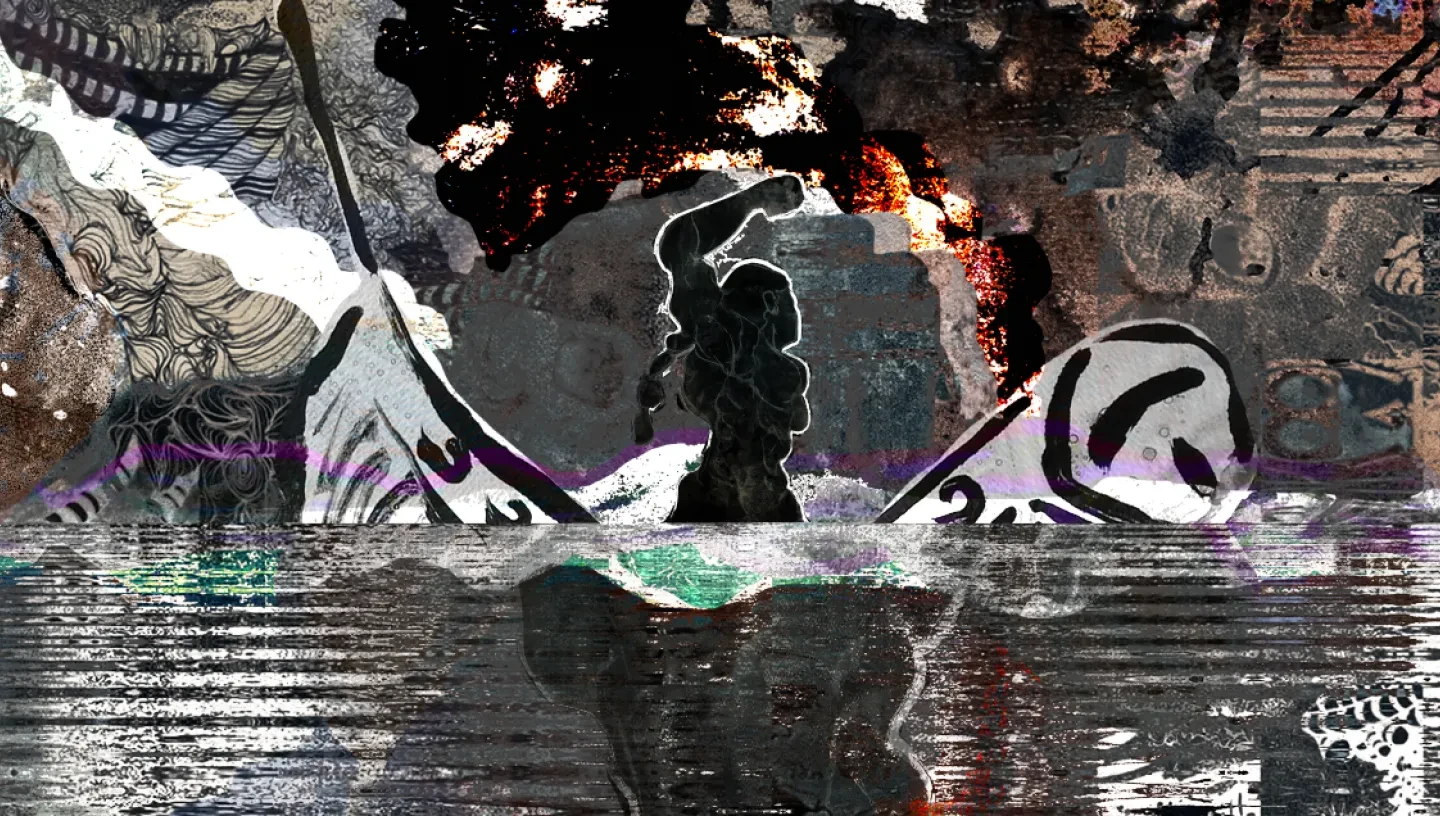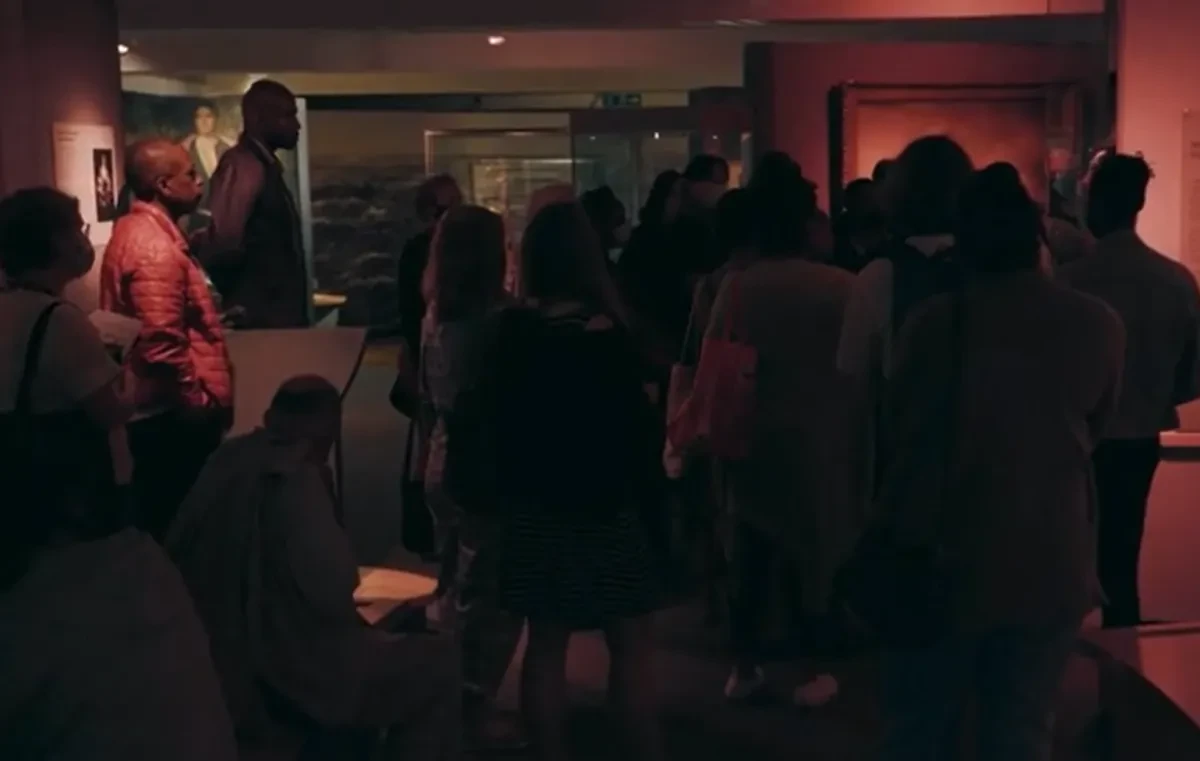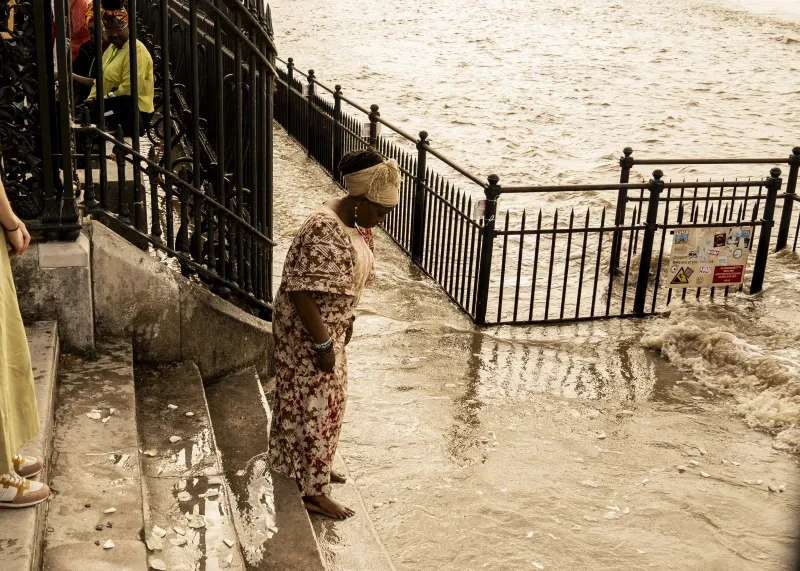
For International Slavery Remembrance Day 2021, the National Maritime Museum invited five young people to interrogate the Atlantic Worlds gallery and create a one-day intervention.
Special thanks to the participants:
Sonia Foday, Jayda Sàngolana, Divine Mankumbani, Joel Sadique, Hena Sharma
Facilitated by: Deanio X and Yosola Olorunshola
Below, hear from participants about what the intervention involved.
Overview of the intervention
How has the Atlantic Worlds gallery changed?
The following text was written by the participants:
The Atlantic Worlds gallery needs to be re-imagined. The hard truths of the period between the 17th and 19th century – the rise of colonialism and the Transatlantic Slave Trade – are difficult to confront. But the stories of the lives affected by these global systems, and their enduring impact today, must be told.
This project is a small step towards this – an opportunity to widen the perspectives contained within the gallery. It’s impossible to transform the space for a single day, but we hope to create space for practical conversations that shift power away from the institution and into the hands of people affected by the legacy of slavery, empire, and the racism that persists today.
The history of slavery and colonialism will always be uncomfortable, but today, we’re challenging assumptions about who gets to feel comfortable here and who feels excluded. As participants, we have all experienced the denial of our histories at some stage or another. Today, we want to fill some of the gaps, challenging the temptation to skirt around the issues or sanitise the violence of the age.
It’s the start of a long process, but we hope that one day, people like us will visit this space and find something that feels more honest and true.
What did the Atlantic Worlds intervention involve?

Changing the lighting and language
The dim lighting in the Atlantic Worlds gallery adds to the evasive atmosphere that dominates the space. Throughout the current display, vague language shies away from fully confronting the violence of the age. The dark and sleepy mood does not compensate for the unanswered questions that emerge as you walk through the gallery.
We’ve deliberately changed the lighting to disrupt this sedate atmosphere. This is not a place to fall asleep, but to wake up and face reality. The questions around the room are an invitation to challenge the way the story is currently told and ultimately, get closer to the truth.
Creating questions and prompts for visitors:
‘Atlantic Worlds’
- When you read ‘Atlantic Worlds,’ what places and histories come to mind?
- How much of this is represented here?
- Was anywhere left untouched by the impact of the slave trade and colonialism?
‘Connections’ (in the description of ‘Atlantic Worlds’)
- What is hidden beneath this word?
- Who is connected to whom, and why? Do they have a choice about how connected they are?
‘Eventually they began to purchase enslaved Africans…’ (in the interpretation under ‘West Africa and the Atlantic World’)
- What does this suggest to you? Was the process inevitable?
- What emotions does ‘purchase’ evoke? Why focus on the ‘purchasing’ rather than the act of ‘enslavement’ itself?
- Did Europeans only involve themselves in ‘purchasing’ people who were already enslaved?
‘Migrations’
- Who was a migrant then? Who is a migrant now?
- What words would better describe these relationships?


